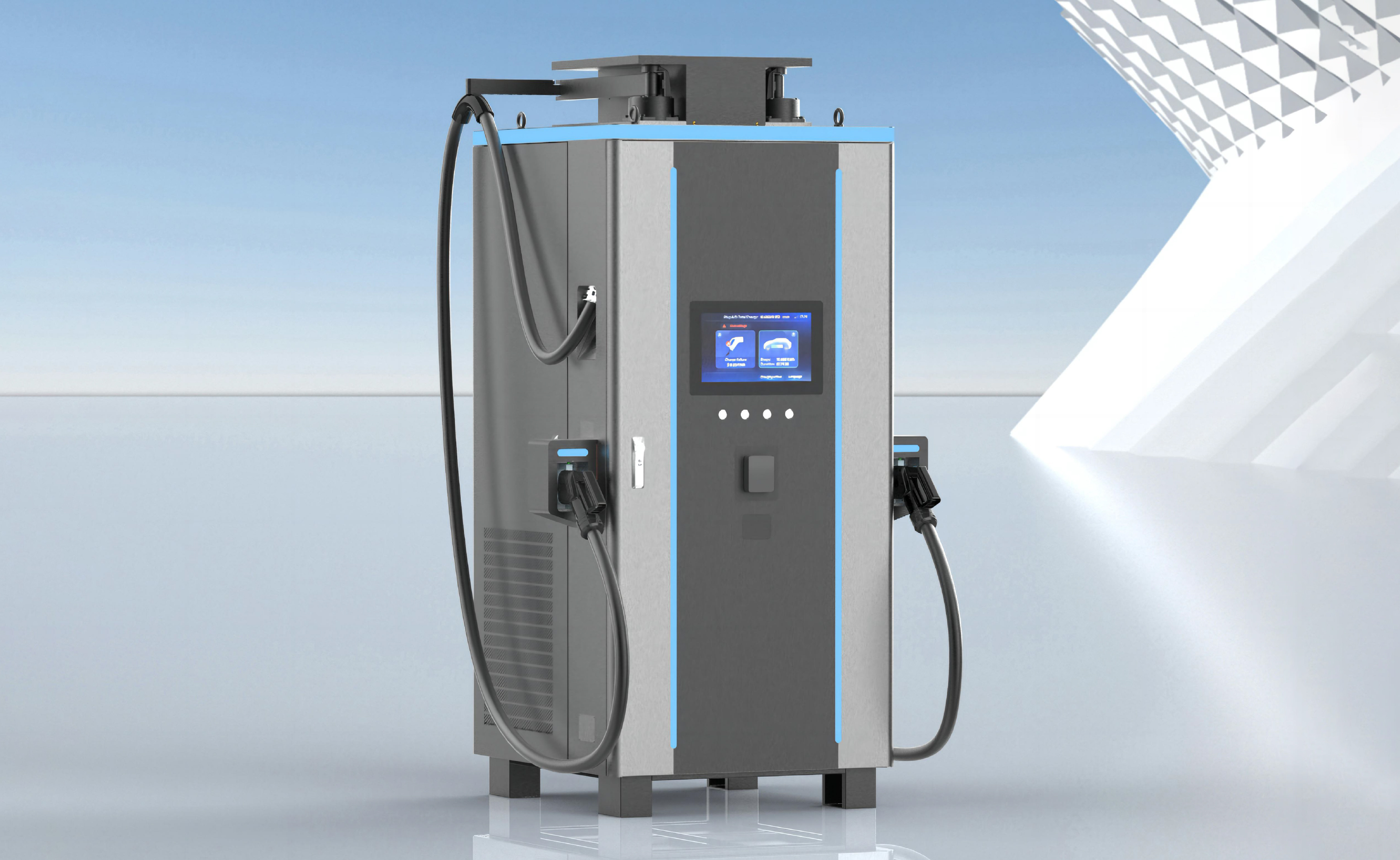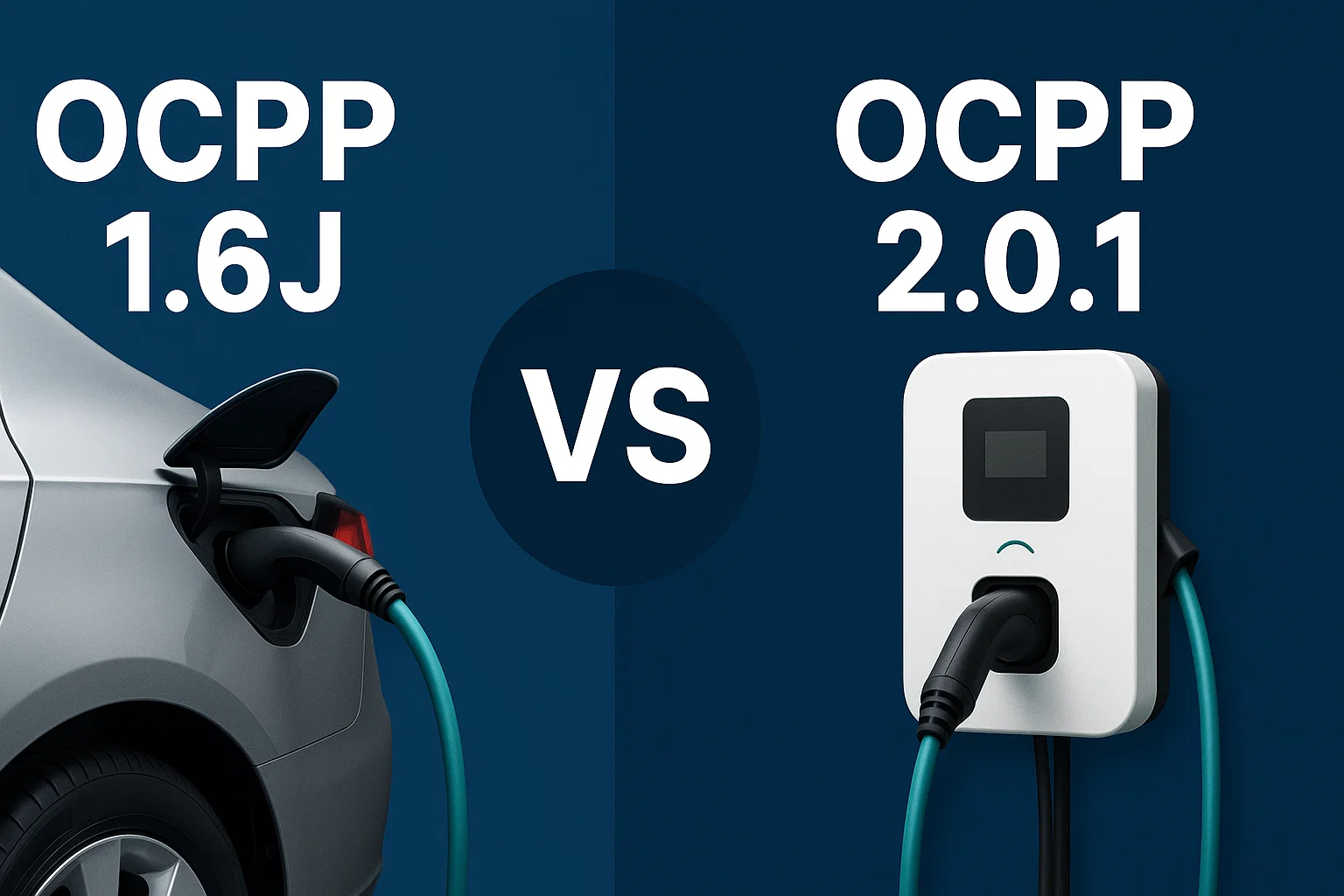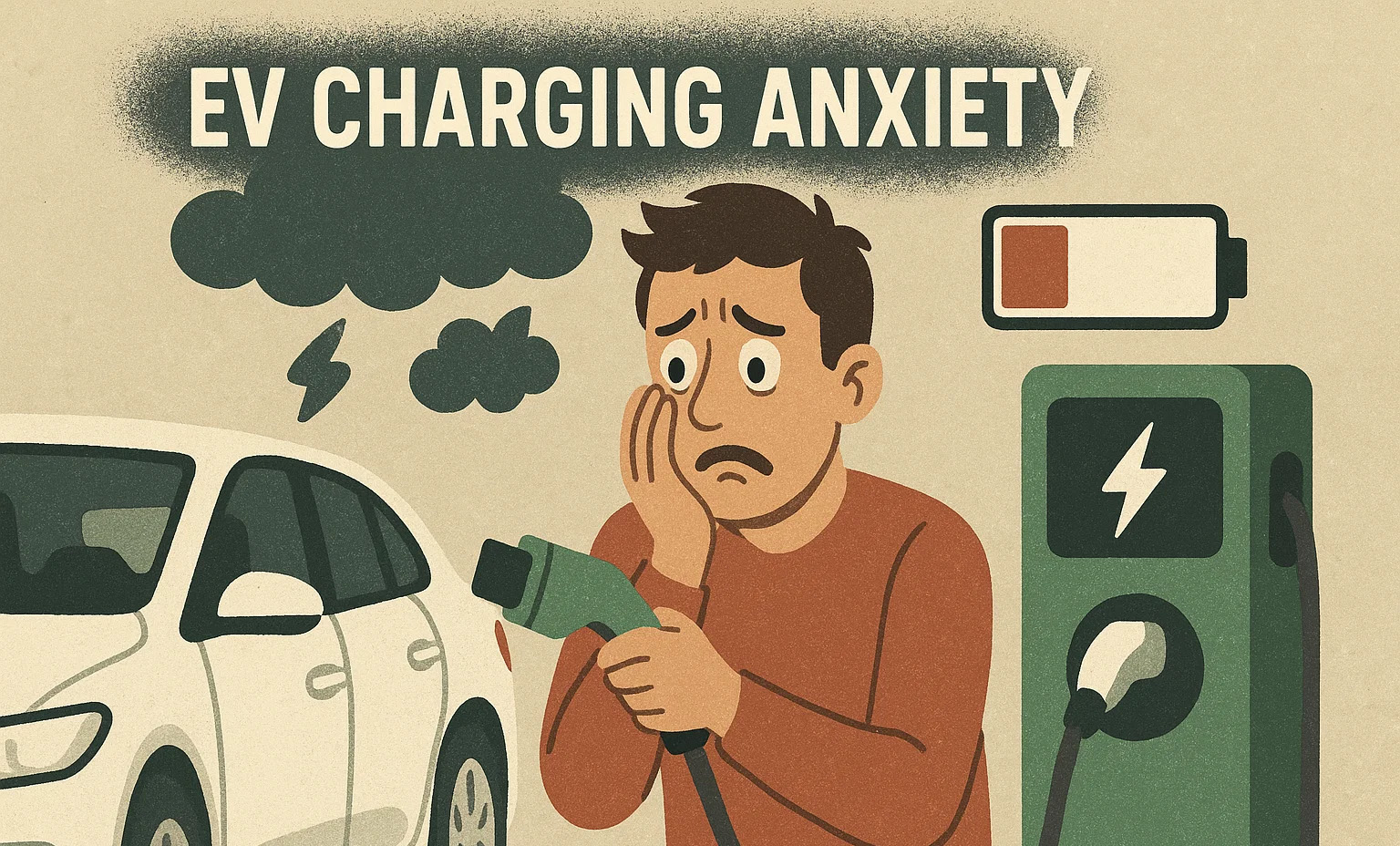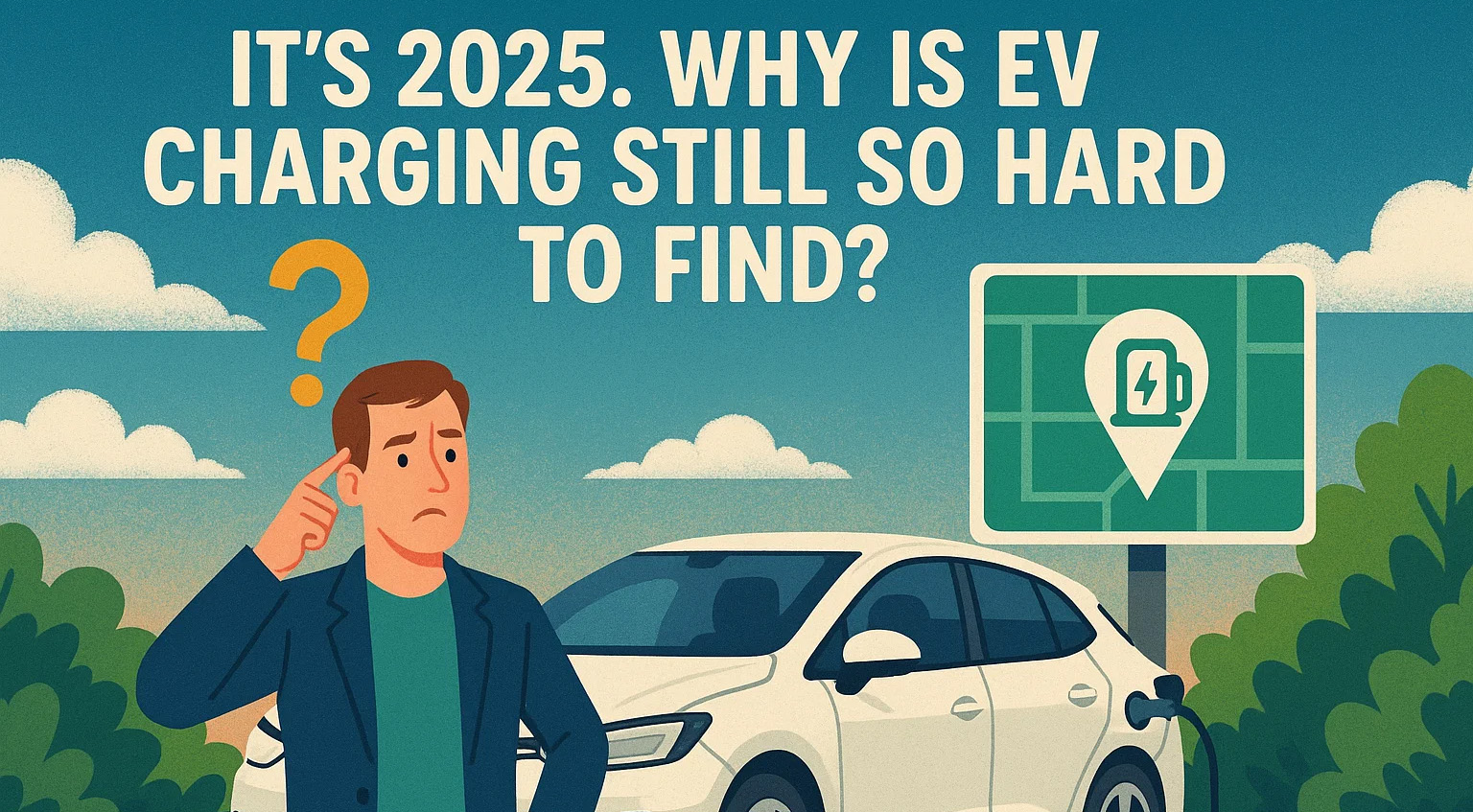Electric vehicles are becoming more mainstream every day. Governments are setting bold targets. Car manufacturers are going all-in. More drivers than ever are making the switch. And yet… so many people still struggle to find a place to charge. We hear the same story again and again: “I love my EV, but I’m constantly anxious about where I’ll charge — especially on longer trips.” So why — in 2025 — is EV charging infrastructure still lagging behind EV adoption? It’s not just a matter of catching up. It’s a matter of changing how we think about charging altogether. Here's a closer look at the hidden barriers slowing down infrastructure rollout — and some thoughts on where we go from here.
🏗️ Not Enough Power — Literally
One of the biggest misconceptions about EV chargers is that they’re like adding another vending machine or parking meter. They’re not. Even a basic AC charger draws more power than many businesses are set up to handle — and DC fast chargers? They can demand as much energy as a small office building. That means expensive upgrades to the local grid, permits, and often long wait times from the utility. In some rural or older urban areas, the power just isn’t there yet. So even if a business wants to install chargers, the infrastructure can't support it — at least not without a significant investment of time and money.
💸 Poor ROI for Site Hosts
Even when the power is available, many property owners hesitate. Installing EV chargers can cost tens of thousands — and the revenue isn’t immediate.
Unlike fuel pumps, which operate at high volume and margin, most EV chargers are idle much of the day in early stages. For the site owner, it might take 5–10 years to see a return. That’s a tough sell.
Especially when the charger might be:
• Used occasionally
• Prone to software or payment issues
• Taking up valuable parking space
Until charging becomes a reliable revenue stream, many businesses will see it as a cost — not an opportunity.
📍 Red Tape and Planning Delays Add Friction
Another major issue is local planning and permitting. Installing chargers — especially in shared or public spaces — can involve multiple approvals, fire regulations, accessibility requirements, electrical safety inspections, and more. Even in regions with government support, the process is fragmented and slow. While some cities are taking proactive steps, most haven’t adapted their systems fast enough to keep up with the EV boom. The result? Projects stall for months (or years), while drivers continue to circle for working plugs.
🧱 There’s No Real Incentive for Property Owners
Let’s say you’re a retail landlord. You’re not an energy company. You manage tenants, not kilowatt-hours. Why install EV chargers? There’s no clear path to ROI. It’s not always obvious how charging helps rent retention or adds value — especially when someone else is using the power and collecting the payment. So many landlords do nothing. Not out of resistance — but out of lack of incentive. Without flexible business models, shared revenue opportunities, or “plug-and-play” service offerings, the average building manager is likely to wait. Or worse — wait for their competitors to move first.
📶 The Tech Can Still Feel Too Complicated
Here’s another hard truth: Not all EV charging hardware and software plays well together.
Operators worry about:
• Compatibility between hardware and backend systems
• Poor UX for customers
• Payment failures
• Unreliable connections
• High maintenance costs
Nobody wants to install something that’s going to frustrate customers, damage brand trust, or trigger support calls daily.
This is especially true for hospitality, retail, and fleet operators who rely on seamless customer experience.
📊 Most Businesses Don’t Have the Data to Justify It
Ironically, one of the biggest barriers is uncertainty. How many EVs are visiting this area? Will they use the charger? What hours are busiest? What kind of speed do drivers expect? Without visibility into usage patterns or demand, it’s hard for site hosts to make smart investment decisions. In the absence of data, the default response is “maybe later.”
So What Can We Do About It?
The answer isn’t just “build more chargers.” It’s make it easier and smarter to build them.
That means:
• Prepping grid infrastructure in advance — especially in high-demand zones
• Streamlining permitting with EV-specific fast-track rules
• Creating stronger public-private partnerships that de-risk private investment
• Offering more creative monetization: ads on charger screens, retail tie-ins, loyalty apps
• Designing chargers that are simpler to install, manage, and upgrade
And most importantly — making the business case for EV charging clearer for property owners
Because until the return on investment makes sense, the expansion will remain too slow to meet demand.
✅ Final Thoughts
We don’t just have a charging shortage. We have a strategy gap.
EVs are moving fast — but infrastructure can’t run on momentum alone. It needs:
• Smart planning
• Reliable tech
• Better business models
• And a stronger “why” for everyone involved
At GreenSeed Power, we’re working with partners across the UK, EU, and US to deliver customisable, scalable EV charging solutions — from OEM manufacturing to smart platform integration — helping more businesses take the leap confidently.
Because the future of mobility needs infrastructure that’s just as ambitious as the vehicles we’re driving.
Interested in learning more about the future of EV charging?
Check out our comprehensive guides and join the GreenSeed Power community to stay ahead of the curve. Contact us to discuss how our solutions can help your business transition to sustainable energy.

CPO | Software
The Future of Electric Vehicle Charging

General | Software
OCPP 1.6J Explained: How It Compares to OCPP 2.0.1 and 2.1

General | Hardware
EV Charging Anxiety Is Real — And It's Not About Range


